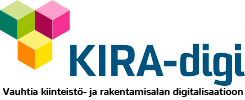Agile method for modelling buildings
With the right kind of work process, buildings could be modelled almost in real time – and in an agile, affordable and reliable way.
What kind of problem is this project trying to solve?
The current building measurement methods are either expensive and laborious, or cost-efficient and fast at the expense of accuracy.
Traditional laser scanning provides reliable results, but the costs of scanning are high, especially in confined and complex spaces. The market has seen the introduction of SLAM (simultaneous localisation and mapping) systems, which speed up field work radically and, in the best cases, enable registered cloud point files to be obtained automatically for an entire site. The systems’ weakness, however, is in the inaccuracy and unreliability of the measurement data.
We are developing a work process that would take advantage of the high speed and cost-efficiency of SLAM systems in the measurement of large residential, commercial and industrial properties, and that would simultaneously ensure integrity and sufficient accuracy in the models.
Objective: creating an agile work process for modelling buildings
The objective of this pilot project is to develop and test a new, agile work process that combines rapid measurement in the field, almost real-time modelling, and measurement control as the model progresses.
What is being done in this project?
The work process being developed is based on the transfer of measurement data continuously, almost in real time, to the modeller’s workstation. The modeller proceeds in creating the model as data is received, providing measurement instructions to the person performing the measurements while he or she is still at the site. The measurer will perform re-measurements or more accurate measurements of individual details with a SLAM device or another tool until the model is in all respects complete and it fulfils the accuracy requirements.
The work process is, to a certain extent, an analogue of agile development, a familiar concept from software technology; a rough model of a site is prepared quickly, with details added to it based on feedback until the end result fulfils all the requirements set for it.
In early 2017, we modelled an industrial property with an area of about 8,000 square metres using a SLAM scanner, as well as an ordinary laser scanner and tachymeter for reference measurements. The measurement data was used to create a building model in the ArchiCad application. Although the final model met quality requirements, we came to the conclusion that the work process will have to be completely rethought.
Who benefits?
Architects, construction engineers and all those who perform measurements and modelling of properties.
Implemented by:
KVA Arkkitehdit Oy, modelling
e-mittaus / Myymore Oy, measurement
A client company of KVA or e-mittaus whose site will be modelled
Contact information
Markus Nymark, KVA Arkkitehdit
Tel: +358 40 057 7642
Email: markus.nymark(at)kva.fi
Mika Jahkola, e-mittaus
Tel: +358 50 431 3313
mika.jahkola(at)e-mittaus.fi




